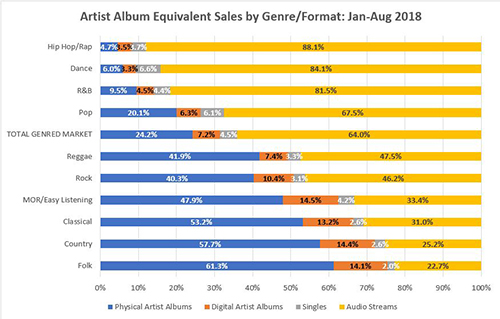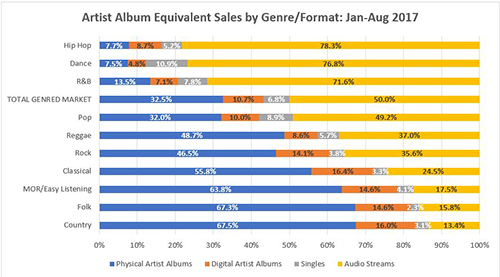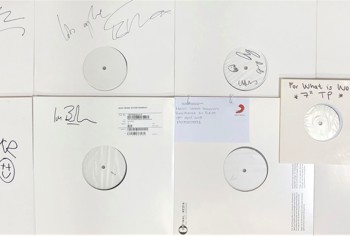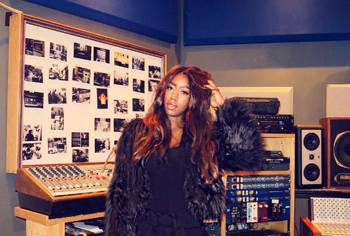In this blog BPI’s Rob Crutchley looks at the contributions acquisition and access make to genre consumption in 2018.
Whether certain genres are more naturally suited to a particular format is a much-debated topic. There are several factors at play but demographics are certainly key, in that younger listeners are probably more likely to prefer to access their music rather than own it, and therefore genres with a younger profile are more likely to find their audience on streaming platforms.
Demographics also significant in that older listeners are more likely to be steeped in the concept of consuming music via albums, and more readily associate the idea of appreciating an album with purchasing it. This also ties into the notion that some genres have a more storied history of album artists, whereas others are more track-based – although it has fought hard to challenge the stereotype, Dance has often been depicted as a genre that doesn’t produce that many album-making artists. The ubiquity of playlisting could be seen as running counter to the culture of the album, so does this mean that genres faring better on streaming services are also the ones that were not so well served by (or even existing in) the peak era of the physical and digital album?
There’s no perfect way to assess the popularity of different formats within each genre, but converting all consumption to Album Equivalent Sales (AES) according to data from the Official Charts Company is one method. Not every release and every track that is consumed has a genre allocated to it, so any analysis has to be examined with that proviso in mind – this analysis looks only at titles that have been assigned one. There is also the thorny issue of allocating a genre to a track or album in the first place – many straddle several at once, or sit defiantly outside of any traditional definition. For reasons of consistency, only artist titles have been included in this instance – compilations have been omitted.
With those caveats considered, it’s interesting to see what transpires. The shares each format accounts for within the 10 genres with the largest AES totals are presented in the accompanying chart. The most immediate takeaway is that Hip Hop/Rap has the greatest proportion of its Album Equivalent Sales total coming from streaming: 88% in the January to August 2018 period, up from 78% in the same period in 2017. Streaming accounts for 84% of Dance’s AES tally, up from 77%. These were the only two genres where album purchasing comprised less than 10% of their total.

Just over a quarter (26%) of Pop’s consumption takes place via album purchasing but that rises to 50% for Rock. Hip Hop/Rap, Dance, R&B and Pop all sit above the total market average for streaming share but Rock, Classical and Country are among those genres for whom streaming currently makes up less than half of their individual Artist AES totals. It could be that both demographics and their historical associations with the album are contributing to this, although it should be borne in mind that streaming data can of course be comprised of full album plays as well as isolated tracks.
As might be expected, the share of consumption attributable to streaming within each genre has increased compared to the same period in 2017:

The fastest year-on-year share growth for streaming occurred within Pop and MOR/Easy Listening. The increase for MOR will in part be due to the success of tracks from The Greatest Showman: at the time of writing Keala Settle’s This Is Me is the sixth most-streamed track of the year and eight songs from the soundtrack appear in the top 100 for the year to date. For Pop, artists such as Dua Lipa, Camila Cabello and Anne-Marie have racked up huge streaming numbers in recent months.
Smart speakers have opened the world of music streaming up to a swathe of new consumers, leading many commentators to speculate that genres with smaller streaming shares might start to receive more pickup. But for now it seems that Hip Hop, Dance and R&B are adapting best to the format, with it becoming the dominant format for many key titles – in its week of release Travis Scott’s Astroworld album charted at number three with a streaming share of 92%. All genres are seeing the share of consumption attributable to streaming grow, but how this affects the visibility of each going forward remains to be seen.




